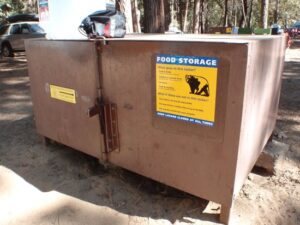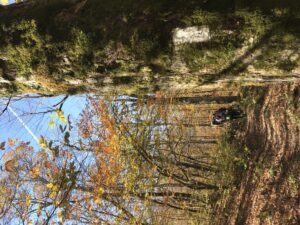This weekend, I took a trip to Mount Rogers, the highest point in Virginia, and adjacent to the popular Grayson Highlands State Park. I first hiked here when I was eight or nine years old, my first backpacking trip with my dad (pictured).

I’ve returned a number of times over the years under various circumstances, but often with novice backpacker friends, as it’s a great place for your first trip — stupidly scenic, filled with ponies and other wildlife, and not a terribly challenging area to hike in and around.
The park has seen a surge of usership in recent years, as have many popular state and national parks across the country, leading to a question of how best to manage the impact caused by humans on these preserved areas.
Some parks have moved to a reservation-only system for entry, or some version of that, such as parking by reservation only. Other parks have contemplated raising prices for entry, though this raises a lot of important questions about parks equity, and is generally an unpopular route. Other possibilities include redirecting visitors to less-popular but still-beautiful routes or parks to reduce impact on famous landscapes. For many parks, the goal is not only to reduce human impact on the landscape, but to preserve the ideal experience of the wilderness for park visitors, which for most individuals, likely does not include large crowds or standing in lines. (Interactions with others can, of course, be an important part of the outdoors experience, for better or for worse.)
Regardless of whether a park is limiting its visitors, it must contend with how it deals with the impact of visitors who are already there. Hikers have a physical impact upon existing trails, and can damage the surrounding area when they leave the constructed trail to avoid mud puddles, or visit adjacent features. High volume tent establishment at campsites can impact vegetation, as can frequent wood gathering for fires. And, importantly, there is the icky problem of how to manage human waste. Within this space lies a number of interesting design decisions.
Sometimes signage is used to encourage or discourage certain behaviors, and sometimes cues are less verbal and more physical. Downed branches can be arranged in the areas around campsites to discourage tenting or walking beyond the established site and allow for the regrowth of vegetation. The existence of a privy can discourage poor waste disposal practices. Bear boxes, which are large metal safe-like structures used to store food, can encourage better food storage practices that keep food out of the paws of wildlife and help keep animals wild.

However, this infrastructure leaves its own impact on a landscape. Increased infrastructure in the backcountry can make the wilderness feel, well, less like the wilderness. Yet its existence helps preserve the wilderness experience in other ways. It’s a tradeoff that echoes the language of the law that established the National Park Service in 1916, which states that the National Parks are “to conserve the scenery and the natural and historic objects and the wild life therein and to provide for the enjoyment of the same in such manner and by such means as will leave them unimpaired for the enjoyment of future generations.” Striking a balance between enjoyment and conservation is an interesting design problem, particularly in a time when park usership is on the rise. Maintaining trails and campsites serves to concentrate human impact, leaving the remaining land as untouched as possible, while  seeking to assure that the designated impact areas are not “loved to death.” Finding what methods best discourage destructive behaviors and educate visitors on the best way to move through the park while maintaining a positive wilderness experience will likely rise in importance as an object of investigation in the coming years. Happy trails, y’all.
seeking to assure that the designated impact areas are not “loved to death.” Finding what methods best discourage destructive behaviors and educate visitors on the best way to move through the park while maintaining a positive wilderness experience will likely rise in importance as an object of investigation in the coming years. Happy trails, y’all.

